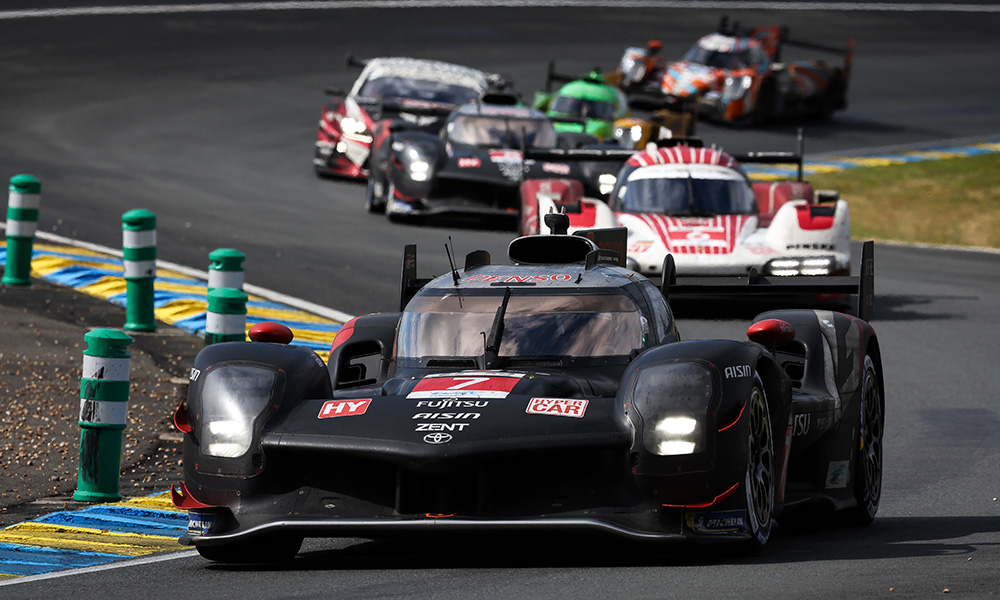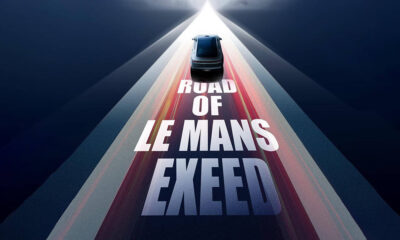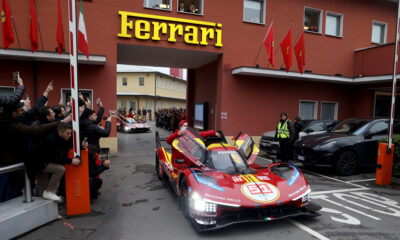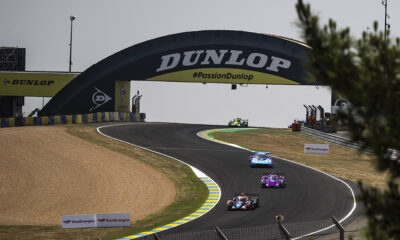
Photo: Toyota
Jose Maria Lopez believes that two slow punctures and a pair of separate engine issues were among the factors that prevented Toyota Gazoo Racing’s No. 7 car from pulling off a fairytale comeback 24 Hours of Le Mans victory.
The No. 7 Toyota GRo10 Hybrid shared by Lopez, Kamui Kobayashi and Nyck de Vries fell 14.221 seconds shy of earning the Japanese marque’s sixth victory, as Ferrari earned back-to-back wins in the French endurance classic.
That was despite the crew suffering two punctures, one while Kobayashi was at the wheel in the morning hours and the other when Lopez climbed aboard for the final double stint in the final hour.
It was also revealed post-race that the No. 7 car was suffering from engine issues, and Lopez feels that Toyota could have potentially come away with the win without the time incurred by these and the punctures.
“We were always coming back and something was happening,” said Lopez, who was parachuted into the lineup as a last-minute replacement for the injured Mike Conway.
“We lost time in slow zones, we had two punctures, one with Kamui and one for me as soon as I left the garage for the last two stints, when it was dry. Kamui had a problem with the engine, and I had one as well.
“I don’t like what-ifs, but we definitely had the pace. We did the fastest lap of the race, my lap was removed for track limits but that was also the quickest lap.
“I have to be proud of what the team did, also my job. In the wet I was gaining a lot of time, making a difference.
“I’m really proud, at 41 years old, coming in one week before, and being able to perform like this. I just have to say thanks to everyone at Toyota for giving me the responsibility to finish the race.”
Lopez lost ground in the final hour when he suffered a spin at the Dunlop Chicane, with the time lost in relation to the car’s rivals similar to the final winning margin of the No. 50 Ferrari.
The Argentinean driver described the spin as “weird” suggesting it may have been caused by “engine braking or something in the system” but denied it cost Toyota the chance to win.
“Luckily I didn’t lose much,” he said. “It was just a quick spin, I only lost ten seconds. The Ferrari was cruising at the end. The real gap was bigger.”
Explaining the engine problems in more detail, Toyota Gazoo Racing technical director David Floury said: “The first one was due to a sensor. The second time was a switch change.
“We don’t have the switch change in the telemetry because it’s not allowed. We had to tell him [Lopez] what to do while he was driving.”
However, Floury doesn’t believe these delays ultimately made the difference in Toyota’s battle with Ferrari, pointing to the slow punctures as more damaging.
“There are different reasons,” he said. “On car No. 7 we had two slow punctures, and in both cases we had to do additional stops outside of our window.”
Asked whether he felt the Toyota was the quicker car than Ferrari, Floury replied: “On absolute pace, I think the Ferrari was a bit faster. Considering all conditions, degradation, I think we were strong.
“I don’t think we lost the race because of the car.”
The No. 8 Toyota of Brendon Hartley, Ryo Hirakawa and Sebastien Buemi came home for fifth, losing ground with two hours to go when Alessandro Pier Guidi’s Ferrari tipped Hartley into a spin.
Hirakawa pinpointed this as the moment that effectively ended the No. 8 car’s challenge, with the car having led at the halfway mark when the worst of the night-time rain arrived and second safety car period started.
“We had a chance to win,” said Hirakawa. “I was leading the race before we had some safety cars, slow zones. It’s a shame. We did what we could. It’s very hard to predict the weather, and it’s easy to say in hindsight.
“Just before the rain came, we had a bit of pace. The rain was not really in our favor in the end. But this is Le Mans. We will come back stronger.”
























